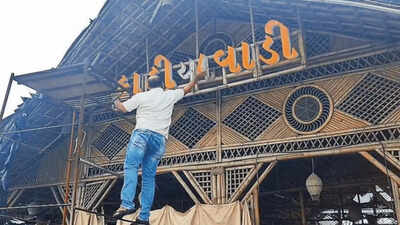Just 50 air-launched weapons pulverised Pak, says IAF vice-chief | India News

NEW DELHI: Less than 50 air-launched weapons fired by India at airbases and radar sites in Pakistan during Operation Sindoor compelled the western adversary to come to the negotiating table and sue for peace, IAF vice chief Air Marshal Narmdeshwar Tiwari said on Friday.“We have discussed a lot about the cost-benefit, especially of air power. There is no greater example I think than what we did in Operation Sindoor. Less than 50 weapons can bring the adversary to the talking table…that is an example that needs to be studied and will be studied (by scholars),” Air Marshal Tiwari said, speaking at an interactive session during an aerospace power seminar here.
Chief of Defence Staff General Anil Chauhan, in turn, said the armed forces need to maintain “very high” operational readiness round-the-clock and throughout the year because Operation Sindoor “still continues”, while stressing that “there are no runners-up in war”.Noting that the rapid advances in technology and the ongoing geopolitical churn have ushered in “a third revolution in warfare”, the CDS said the Indian military needs “information warriors, technology warriors and scholar warriors” geared for multi-domain operations. It is essential for the military to learn both ‘shastra’ (warfare/weapons) and ‘shaastra’ (knowledge), he said.Though Air Marshal Tiwari did not specify the weapons that were used during the May 7-10 hostilities, IAF deployed Sukhoi-30MKI, Rafale and Mirage-2000 fighters to launch BrahMos supersonic cruise missiles as well as Crystal Maze-2, Rampage and Scalp missiles for the calibrated pinpoint strikes on the Pakistani airbases and radar sites, a few of them close to nuclear facilities as well as command and control structuresThe IAF vice chief also said manned systems like fighters “still have a huge advantage” over unmanned systems like drones, in terms of the “compellence” and “coercive diplomacy” to be imposed on an adversary, and will continue to do so for some time.“We are giving too much importance to unmanned systems. While they have a place and relevance in modern warfare, but the kind of weight of attack, the intelligence required, the kind of damage they can cause…You have to see whether they balance with what manned aerial systems bring to the table,” he said.Different speakers at the “Capstone” seminar organised by the Centre for Air Power Studies and College of Air Warfare stressed the need for India to “prioritise” the development of aerospace power, which was “not escalatory” but “a strategic and effective tool for escalation control” as was witnessed during Operation Sindoor. “Operation Sindoor underlined the speed, reach and flexibility of airpower. We established escalation dominance over Pakistan,” said a speaker.Others pointed out that India had drawn a new red line for Pakistan by stressing it will not be dissuaded by the western adversary’s nuclear blackmail and continue to give cross-border kinetic responses to terror attacks in the future as well.







